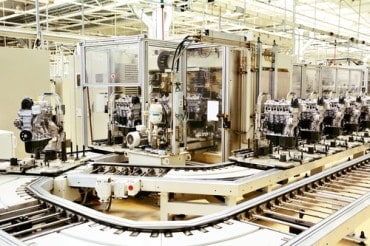
When chatbot personalization is done right, enterprise chatbots provide the best and fastest solution to specific issues rather than a solution to previous iterations of an issue.
Digital interaction in today’s marketplace is a must as customer demands for more dynamic solutions to their everyday problems increase. The digitization of customer experiences has been on a sharp rise in recent years, including the increased adoption of chatbots. However, chatbot implementation has been significantly failing for businesses, and customers have been venting. Why? Because they fail to provide hyper-personalized experiences, providing a one-size-fits-all solution that doesn’t fit anyone’s best interests in the slightest.
Today’s chatbots are constantly inundated with data and are hard-coded, leaving little room for interpretation or understanding when interacting with people. They are heavily scripted and pre-determined, delivering the same answers to different questions, regardless of context or tone. The increase in customer frustrations and decrease in productivity these issues cause damage to the reputations of the enterprises actuating chatbot solutions, regardless of the use case.
Chatbots need personalization more than any other trait to deliver high-quality experiences to customers and employees. Without it, chatbot development is a waste of time.
See also: Imparting Chatbots with Multiple Conversational Styles
The importance of chatbot personalization
Chatbots have been struggling to ignite the sort of digital transformation that everyone talks about, a transformation that revolutionizes how people communicate and carry out daily tasks to achieve unprecedented productivity. Enterprise chatbots should be fundamental to this digital revolution, providing benefits to customer experiences, product development, and supply chain management, among a host of other use cases. In the manufacturing sector, intelligent chatbots can streamline the entire business process, from booking the order to checking the status of an invoice. However, they have not proven to be the solutions-oriented technologies they should be because of one common pain point; they cannot communicate.
The purpose of creating and adopting a chatbot is to communicate on various levels to help solve different problems, such as call containment for call centers and procurement issues. A chatbot should be the core of customer engagement, automating low-value tasks that often take enterprise leaders and their employees from more mission-critical tasks. However, enterprise leaders have been voicing their frustrations because customers struggle to communicate coherently with chatbots, costing them various business opportunities.
Today’s enterprise chatbots are too data-reliant and scripted, forcing people to pick responses from a list rather than responding in real time via natural language. As a result, the total cost of ownership (TCO) overrides the return on investment (ROI), while enterprises are stuck with multiple siloed bots, leading to maintenance headaches and additional expenses that can cripple their operations.
Enterprise chatbots can’t solve problems if they don’t understand specificity, knowing the particular context, emotions, and importance of the problems they’re tasked with solving. Providing hyper-personalized experiences to customers requires less emphasis on training data and eradicating hard coding. More focus should be put on creating extensive and dynamic personalization, using ontology to ensure chatbots understand specific meanings and synonyms, as well as deep contextual parsing, so chatbots develop high levels of comprehension. The aim isn’t just to provide personalization, but personalization at scale, solving tasks in very specific ways, regardless of the nature of the ask.
Personalization enhances the quality of customer experiences
For businesses in the energy sector, chatbots can be used to report the counter meeting, move customers’ contracts, change the amounts of monthly payments, manage invoices and contracts, and advise customers on tariffs. However, these chatbots don’t have to entirely impersonate humans to be successful. They should quickly deliver meaningful responses that directly address unique human needs and achieve continuous, autonomous learning. They should consistently offer such responses during every interaction. By doing so, enterprises can improve business outcomes and offer highly personalized experiences that establish trusting relationships, creating more opportunities for conversions and loyalty.
The future viability of enterprise chatbots depends on the focus of developers to enable more natural conversations, leveraging AI and natural language to create the sort of high-value conversations that customers deserve. Many current chatbots still use deep learning models rather than generative ones. Plus, their general learning capacity is offline rather than interactive, setting a bad precedent when developing contextual knowledge.
When chatbot personalization is done right, enterprise chatbots provide the best and fastest solution to specific issues rather than the best and fastest solution of previous iterations of an issue. So, a customer may have a specific query related to a separate customer’s query. The context of those queries is different, but because each query has similar buzzwords, chatbots may reply the same way.
Chatbots built to provide hyper-personalized customer experiences store information provided by users, like preferences and purchases, converting them into personalized recommendations that suit unique user needs. There’s no asking to repeat or pre-determined choices that constrain users while interacting with chatbots, just the natural processing and relaying of information to create high-quality engagement.
Personalization is a growth driver for enterprises
Personalization is a winning quality for enterprises because it facilitates growth and spending efficiency when business use cases and key performance indicators (KPIs) are perfectly aligned to address specific needs.
Conversion optimization is a way personalization proves to be a reliable value driver for enterprises, especially for the manufacturing and energy sectors. Many websites have been using chatbots for their web pages, incorporating them into their sites to convert organic visitors into sales opportunities for enterprises. Enterprise chatbots directly interact with customers and can determine which ones are the most qualified leads before setting up sales calls that lead to successful conversions. Furthermore, enterprise chatbots that focus heavily on providing hyper-personalized customer interactions can be used for onboarding sequences, garnering valuable responses and insights to help enterprises provide beneficial services to customers.
For call centers and help desks, enterprise chatbots can deflect several calls from call centers, reduce costs to serve customers, and scale customer service to offset labor shortages and attrition. It also helps to reduce the need for customers to talk with human agents, allowing them to focus on more extensive tasks.
Also, hyper-personalized chatbots can help customers efficiently manage transactions in fintech, presenting more business opportunities. Plus, enterprise chatbots can work across other verticals like enterprise resource planning (ERP) and e-commerce, leveraging parameter-based inputs and dynamic conversation management to best contextualize every interaction. A chatbot should be just as flexible and free-thinking as the humans they interact with, and personalization is responsible for that flexibility.
As chatbots and conversational AI become more prevalent, personalization needs to be a key element during the design phases if enterprises will see significant progress and end the countless frustrations customers and business leaders often face with technology.





























